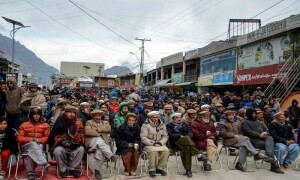ON Nov 30, 2024, the world was jolted by a bold statement from US President-elect Donald Trump. In a move that drew attention from governments, currency experts and global markets alike, Trump threatened to impose 100 per cent tariffs on BRICS, a bloc of nine nations, if they continued to undermine the dollar.
“We require a commitment from these countries that they will neither create a new BRICS currency, nor back any other currency to replace the mighty US dollar, or they will face 100pc tariffs,” Trump warned.
BRICS comprises Brazil, Russia, India, China, South Africa, Egypt, Ethiopia, Iran and the United Arab Emirates.
Many analysts and currency experts have dismissed the notion that the US dollar faces a serious threat of being replaced. However, growing concerns from the rising powers within BRICS, along with economic changes in the US, have created a sense of unease over the future of dollar dominance.
Most currency experts rule out an immediate decline of the dollar
Currency experts and analysts in Pakistan largely dismiss the notion of any imminent threat to the dollar, despite the warning issued by the US president.
Faisal Mamsa, the CEO of leading financial firm Tresmark Investment, said: “I have reviewed several research papers and found no credible evidence of a serious threat to the dollar. There is no real possibility that BRICS can introduce an alternative currency to replace or challenge the dominance of the US dollar.”
While some experts acknowledge the potential for change, they emphasise that there is currently no substantial effort from either the US government or the State Bank of Pakistan to address the implications of Donald Trump’s warning.
Some analysts also suggest that the threat may be more of a political manoeuvre aimed at rallying domestic support for imposing tariffs on imports.
Trade dilemma
Although Pakistan is not a member of the BRICS bloc, it could still feel the impact of these geopolitical shifts. The US remains Pakistan’s largest export partner, accounting for nearly 20 per cent of the country’s total exports. In fiscal year 2024, Pakistan’s exports to the United States stood at $5.9 billion, a significant figure in the context of the country’s overall exports of $30.6bn.
“Pakistan may face double threats: the fluctuating value of the dollar and the US trade policy aimed at reducing trade deficits,” said a senior banker.
He added that Pakistan is also a trade deficit marker for the US, as its imports from the country in FY24 amounted to just $1.87bn. While this may not be a significant figure for the US, it poses a serious concern for Pakistan, he noted.
Despite the concerns voiced by some political leaders and financial analysts, most currency experts do not foresee an immediate demise of the US dollar.
S.S. Iqbal, an expert on international trade and monetary systems, believes the situation is more complex than it appears. “The dynamics of world trade are undergoing a vital change as the US has adopted a more defensive position,” he said.
“In other words, the US is focusing on protecting its own interests rather than projecting its economic dominance globally, as it has in the past.”
So far, Pakistan has remained relatively insulated. The exchange rate of the rupee against the dollar has been a symbol of stability throughout 2024, despite concerns among experts that this stability might have been the result of interventions by the State Bank, with possible assistance from the government.
According to data from the banking market, 2024 saw both the highest and the lowest dollar rates in January. On Jan 4, the US dollar was priced at Rs281.70, but by January 29 it had dipped to Rs275.86, marking a significant decline.
Since this low point, the dollar gradually appreciated against the rupee, ending the year with an average rate of Rs278.33.
In stark contrast, the year 2023 was marked by extreme fluctuations. The dollar hit as high as Rs306 in the interbank market and Rs340 in the open market, fuelling economic instability. The dramatic depreciation of the rupee in 2023 shook business confidence and led to an accelerating dollarisation of the economy.
A parallel market for foreign currencies flourished in 2023, further exacerbating the situation. Remitters found it increasingly easy to send money through the illegal Hundi and Hawala systems, earning a premium of Rs30-35 per dollar.
Zafar Paracha, general secretary of the Exchange Companies Association of Pakistan, said: “The year 2024 will be remembered for stability of the exchange rate, which allowed both exporters and importers to navigate the uncertainty.” He noted that the local currency had made significant strides, enabling both the government and the SBP to benefit from the situation.
The central bank emerged as a major buyer of dollars from the banking market throughout 2024, ensuring adequate liquidity.
Published in Dawn, January 5th, 2025















































Dear visitor, the comments section is undergoing an overhaul and will return soon.